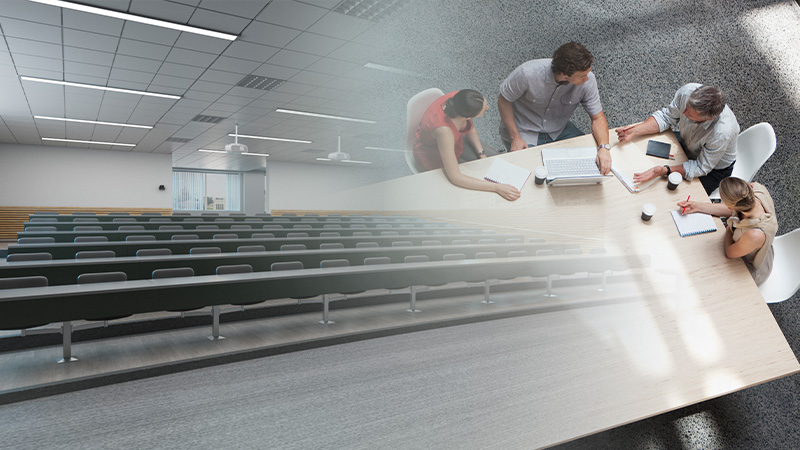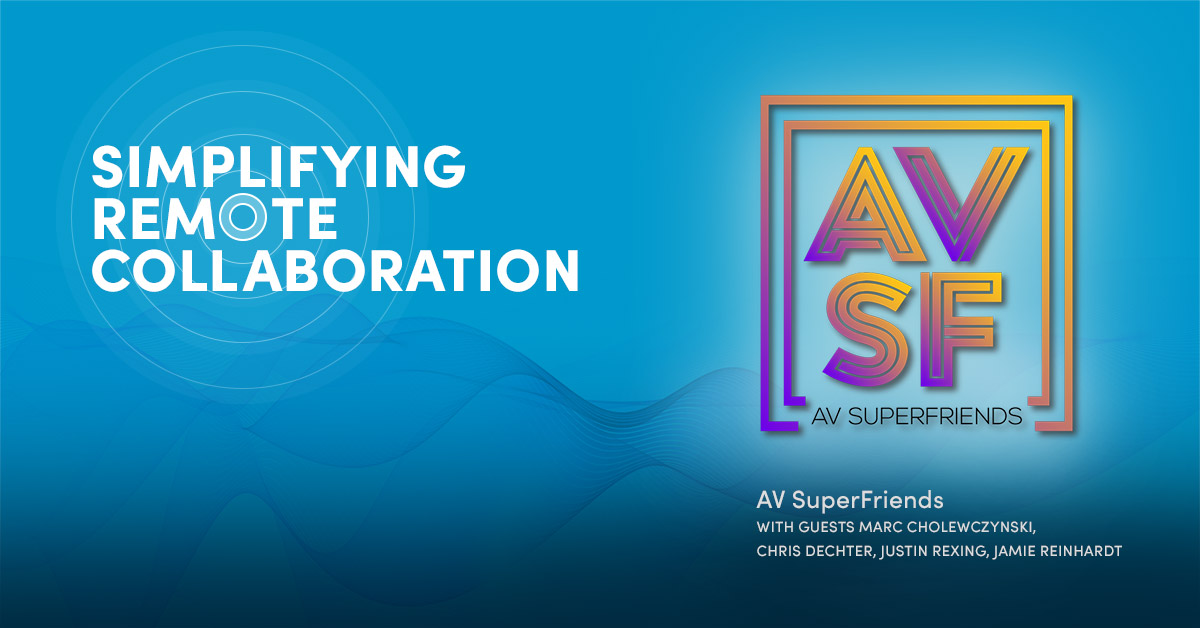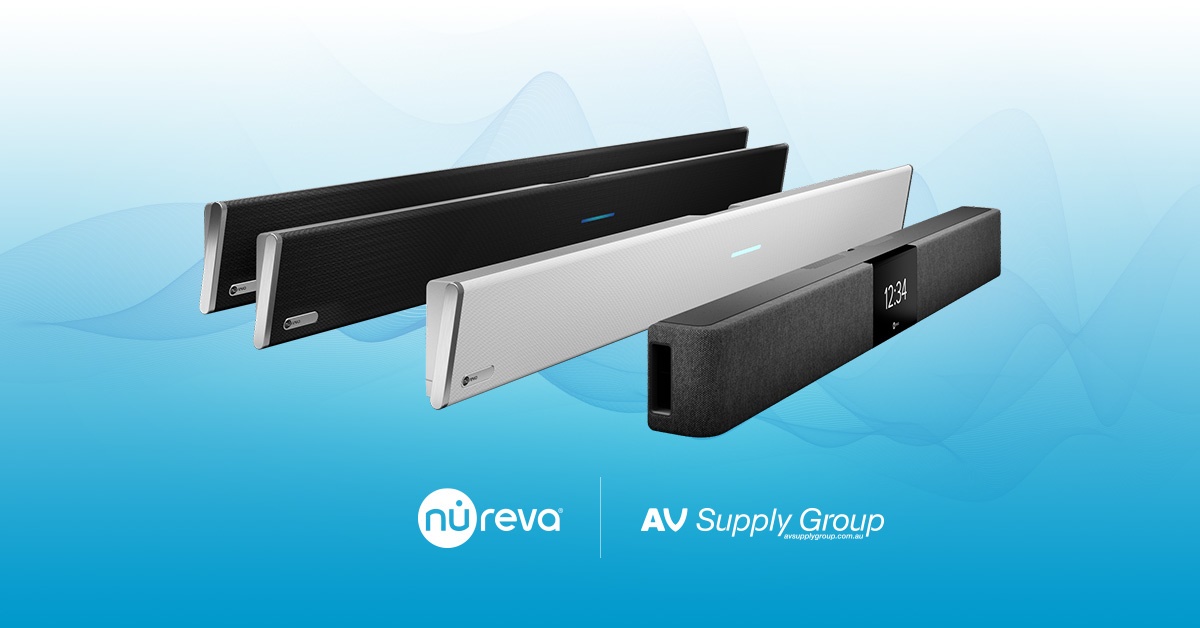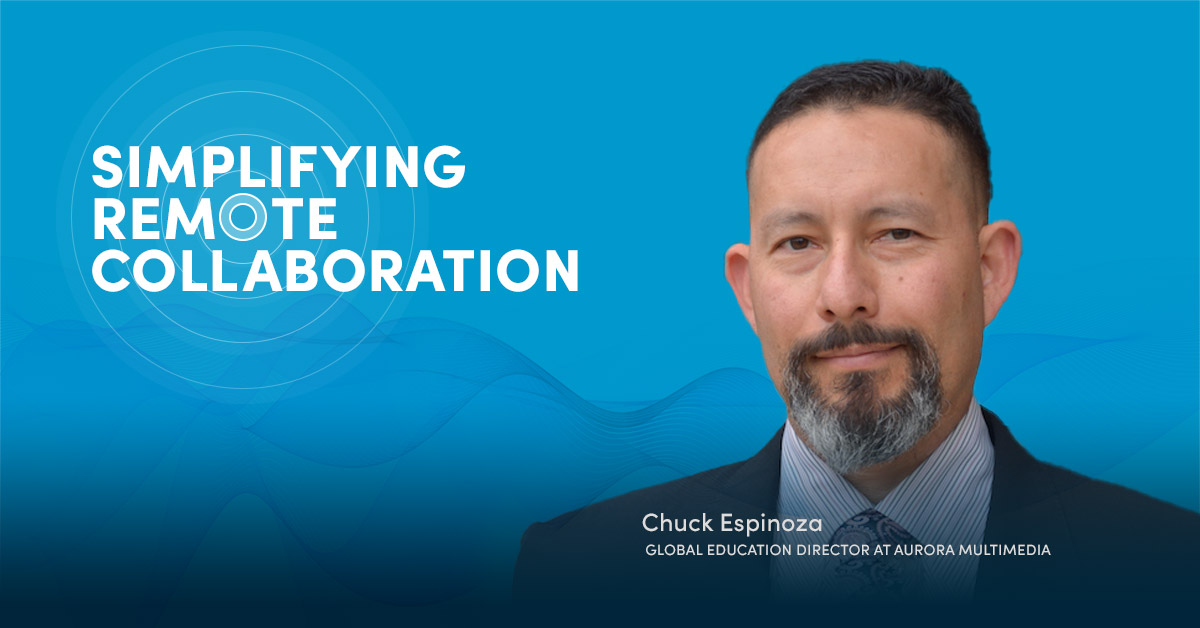March 1, 2023
Seven tips for higher ed AV/IT from the AV SuperFriends

Posted by Dave McKean on Mar 1, 2023 6:00:00 AM
Simplifying Remote Collaboration – in the era of hybrid work and learning, many IT pros are being asked to play a greater role in supporting remote collaboration. This blog is part of a content series that looks at different aspects of remote collaboration and innovative ways to simplify and support it.
“We don’t just live in the specification world. We don’t live in the sales world. We live in the ‘let’s enable teaching and learning world.’”
That’s a quote from Jamie Reinhardt, a member of a very interesting and knowledgeable (and fun) group called the AV SuperFriends. In their own words they are, “a group of audio and video, higher education technology and eLearning nerds, sharing their successes and failures related to the intersection of AV and pedagogy.”
And, as demonstrated when several of the SuperFriends appeared on the Simplifying Remote Collaboration podcast (sponsored by Nureva), they are much more than tech experts. They feel passionately and think deeply and holistically about the role of tech in learning and remote collaboration.
In their podcast appearance they discuss a range of challenges they face as frontline AV/IT pros, from limited resources (time, money, expertise) to widely ranging tech-comfort levels among faculty, to equally widely ranging physical and infrastructure environments (old to new, well-designed to poorly designed) and more.
What follows is a distillation of their recent thinking in the form of seven tips and best practices. We hope this content will be of value to anyone involved with AV tech in classrooms, including of course AV/IT pros and also administrators and faculty. Integrators and architects could also benefit from gaining a closer look at the thinking of the AV/IT pros they work with.
Many of us here at Nureva found ourselves nodding in agreement as we listened to the ’Friends, so we’ve added a few asides on how our thinking aligns with theirs and how our products support their approach.
1. Get AV/IT involved at the beginning of the outfitting process
All the SuperFriends were adamant about this. As Chris Dechter, manager of instructional technology at University of Wyoming, put it, “AV wants to be involved before an architect gets there. We want to be there for the initial conversation – when a department says, ‘Hey, we want to do something in this space, and we’re kind of thinking about this and that.’ And I can back them off so the conversation goes from saying, ‘I want to buy widget A, B, C,’ to saying, ‘We need to figure out a solution for this by talking it through from an initial high level.’”
As Chris also notes, bringing in AV/IT late in the game can mean a big hit financially because retrofitting and fixing problems costs far more than addressing all the issues, needs and wants for a project at the start. “I think we all have this frustration of getting in on a project that’s 50% done, and it’s too late to actually fix it. And it’s far more expensive to do that late in a project. So the earlier the better.”

2. Establish a clear definition of success for any AV project
Relatedly, Marc Cholewczynski, associate director of academic technologies for Oregon State University Technical Services Group, points out that it is vital to define success for a project, and that AV/IT should be part of that discussion.
And Marc has a succinct formulation of how to frame or define success. Simply ask, “what do we need to do to make this space successful?” He adds a few parameters for a successful execution of an AV/IT project: “It’s low friction communication and is bidirectional. It’s easy to use. It’s not breaking down a lot. And you want it to be intuitive.”
In short, it should be simple. And simplicity is one of the hallmarks of Nureva® audio. In fact, it’s right there in our occasional tagline: “Great audio, simplified.” How simple? Users tell us they find our systems incredibly easy to use. You get full-room mic coverage and playback in an average-sized classroom with just a single microphone and speaker bar and a connect module. Outfitting a large classroom, lecture hall or flex space takes just two mic and speaker bars and a connect module. AV techs can easily install them in less than an hour. And with so few components, there is less that can go wrong or need servicing.
3. Avoid knee-jerk deployments
All the ’Friends agreed with Marc when he said that everyone involved in a new AV project should, “Really be focusing their attention back to what is the actual mission of this environment that you’re going into. And not just knee-jerk deploying and just putting a bunch of stuff out there because there was some dream. Let’s have more of a holistic view of all of our environments. Because it’s not necessarily scalable to just have everything everywhere.”
4. Understand the needs and capabilities of faculty and students
Each of the SuperFriends agreed that they had at various times seen situations where there was a disconnect between the initial vision of architects or integrators on a project and the needs of the clients (instructors and students). As Jamie Reinhardt, AV design engineer at the University of Missouri in Kansas City, notes, “AV needs to be very intentional about what we do. When we put things in, we have to make sure that we talk to the teaching support liaisons so we can match our technology with their teaching styles – with the person and with the LMSs [learning management systems]. We can’t lose track of how instruction is happening. We need to ask those extra questions about what your instructors are trying to do.”
This is a sentiment that very closely aligns with the thinking of Nureva CEO Nancy Knowlton, who is a former university instructor and current blogger on tech issues, especially those related to education. In an interview she said, “You need to think as well about the instructors, and how much of their brain do they have to apply to technology? Do they need to remember to stand facing in a particular direction? Do they need to fumble with batteries in a headset that have just worn out? Any one of those things, I think, can throw off a lecturer in a classroom situation. So we try to make the technology quite carefree from both a user’s perspective and the student’s perspective – but perhaps most importantly from the IT manager’s perspective.”

5. Understand AV/IT’s role in supporting a school’s brand
Like the quality of the faculty and physical spaces such as dorms, classes and libraries, the quality of a school’s AV and IT equipment is important to their brand. And supporting that can fall to a great extent to AV/IT. Marc tells us that AV/IT has to have the confidence and knowledge to reject tech recommendations they don’t agree with. “At the end of the day, if something’s presented to us and we’re saying that it’s not going to be the experience that’s acceptable for our university’s brand, it is on us to voice that to the integrators.”
After all, there’s a lot at stake. Marc continues, “students will vote with their feet and their dollars and go somewhere else. We want to make sure that we’re being responsible with resources and creating a premium environment that is beneficial to the students, the faculty and the university at large.” Or as Nancy Knowlton says, “You need to provide that high-quality experience,” and AV tech plays a significant role in that.
6. Consider your support capacity
An often-overlooked factor when choosing new AV/IT tech is whether your team can actually support the systems you are looking at. As Marc says, “You want to reduce downtime by making support a crucial part of your design process.” He continues, “Know your team. Know what they can and cannot do. Understand what you’re taking delivery of and whether your people can support it. Because at the end of the day, you don’t want to take delivery of something that your team cannot support.”

7. Get help if you need it
The AV SuperFriends were formed to support AV/IT, so they have some thoughts on the matter. Chris: “…my advice would be: you’re not alone. There are a lot of resources out there. Heck, start with AV SuperFriends.com. We’ll get you started. There are all these sorts of organizations out there. Start building that network. There’s a lot of people who have the same questions.… a very active and vocal higher ed college and university-specific group of IT and AV technologists and eLearning experts…. We can certainly help you get started, but there’s a lot of places you can go for help and advice on things.”
We love how the AV SuperFriends built an organization that is passionate about serving the needs of students and teachers. It aligns almost perfectly with how Nureva thinks about serving the education market. As Nancy Knowlton says, “It’s the deep understanding of what takes place in the classroom and marrying the needs of both sets of users [teachers and students] in the classroom with what technology can do that really is the commitment that we as an organization have made.”

Posted by
Dave McKean
March 1, 2023

















